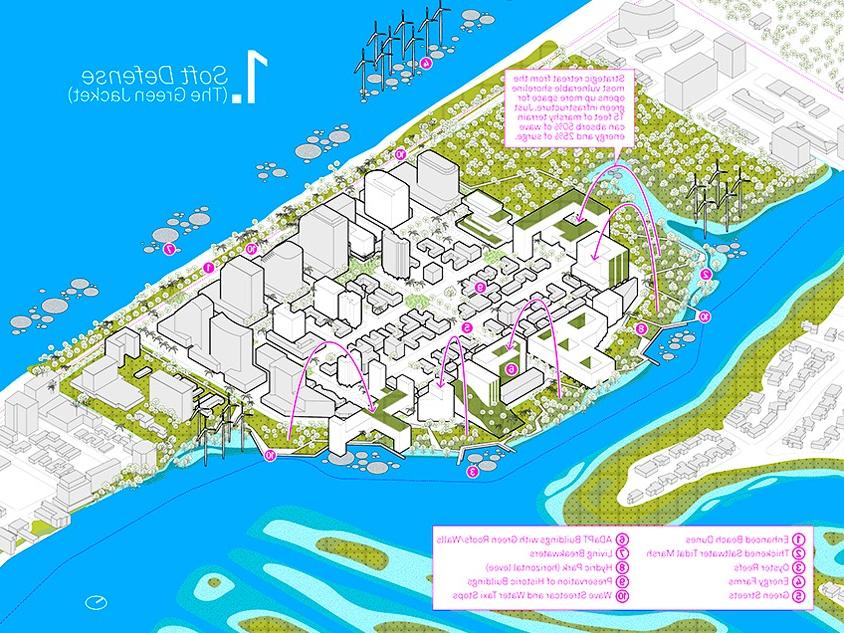Research Thursdays - School of Architecture Leads Initiative to Mass Produce PPE for Frontline Workers
Thursday, Jul 09, 2020



Jeff Huber, AIA, Interim Director of the School of Architecture
FAU’s School of Architecture within the Dorothy F. Schmidt College of Arts and Letters recently received a grant of $19,367 from the Community Foundation of Broward, with support from the Humana Foundation, to purchase equipment to make face shields that are in high demand for the protection of frontline workers and first responders during the COVID-19 pandemic.
Since March, Jeff Huber, AIA, Interim Director of the School of Architecture, and faculty members have worked to meet the growing demand for PPE. The team has produced 2,500 face shields at the School’s Fabrication Laboratory (FabLab) on the Fort Lauderdale campus. Using an open source design from Cornell University, the School of Architecture team made modifications based on user feedback to ensure more comfort in the “halo,” and created the application of a biodegradable 3D printed option, making the FAU shield hygienic and eco-friendly.
Up to now, the team has worked with two 3D printers, filament and transparency film purchased with School funds, and monetary donations from faculty. This grant will allow for the purchase of four new 3D printers and supplies.
“The Ultimakers will be a game changer to mass produce larger parts of the headpieces that are currently being created at a slower and more costly rate on the existing printers. We have the manpower, but this new equipment will mean many more face shields going to those who need it, not to mention serving the school and its students for years to come.”
– Jeff Huber, AIA, Interim Director of the School of Architecture
This is the inaugural Dorothy F. Schmidt College of Arts and Letters Research Thursday report from the School of Architecture with the School having recently joined the College. As an introduction to the director of the School of Architecture, Huber is a distinguished architect who specializes on public realm projects that combine ecological, landscape, urban and architectural design. He has advanced sustainability initiatives in soft cities, agricultural urbanism, green school design, missing-middle housing, Transit- Oriented Development, Low Impact Development/green infrastructure and adaptation/transformation design that addresses climate disruption and sea-level rise.
Among Huber’s recent grant projects is ADaPT: Adaptation Design and Planning Tool for Urban Areas in the Coastal Zone (Salty Urbanism), which included collaborators within the School of Urban and Regional Planning, College of Engineering, and Center for Environmental Studies. Salty Urbanism is a toolbox and scenario planning approach that suggests adaptive strategies that allow coastal communities to continue to function even with future sea-level rise. Projecting a series of “hydro-urbanisms,” the project imagines new archipelago communities, canal-like streets, and deliberately marshy waterfronts, supported by innovative new infrastructure that could allow cities to thrive even under conditions of extreme flooding, while mitigating the effects of future severe weather events.

Using the North Beach Village neighborhood in Fort Lauderdale, Florida, as case study, Huber and his team developed a coupled research methodology and pedagogical approach that envisions and quantifies the experiential and ecological outcomes of alternative ways forward for the neighborhood in response to climate instability, disruption and rising sea levels. These outcomes consider an inevitable future of saturated landscapes and, as a result, integrate research models that accommodate a variety of best management practices and architectural concepts to be implemented over time in the neighborhood adaptation plan. This project was awarded a NOAA Florida Sea Grant and a National Endowment for the Arts Our Town Grant.
The project was awarded a 2018 American Institute of Architects Institute Honor Award, the highest award the profession bestows on a single project.
The same project team is currently working on a second Florida Sea Grant award to enable new codes for green infrastructure and architecture for Broward County titled Salty Urbanism Adaptation: Using Natural and Nature-based Features to Enhance Ecosystem Services and Quality of Life in Response to Sea-Level Rise. Huber’s team will work with regional public works officials to model, map and test the efficacy of the previously proposed transformation of the South Florida urban landscape with attendant planning recommendations. The project plans to address short-term investments that implement first phase approaches to long-term adaptation.
Other recent grants with Huber as Principal Investigator have included Creating a Place-Based Framework for Jefferson Terminal District in West Palm Beach, which created a place-based code for future development in the district that was developed in partnership with the FAU School of Architecture MetroLab Collaborative and the FAU Center for Environmental and Urban Solutions. Huber is also working with the Lighthouse of Broward on a new visioning project for their downtown Fort Lauderdale campus.
Huber has received more than $1.5 million in federal, state and local grants for his interdisciplinary research and design work. Grants have come from the National Endowment of the Arts (NEA), National Oceanic & Atmospheric Administration (NOAA), Kellogg Foundation and United States Environmental Protection Agency, to name a few.


